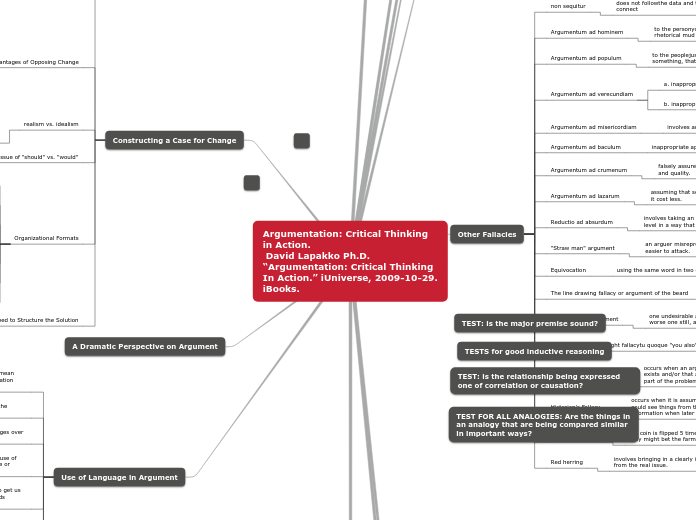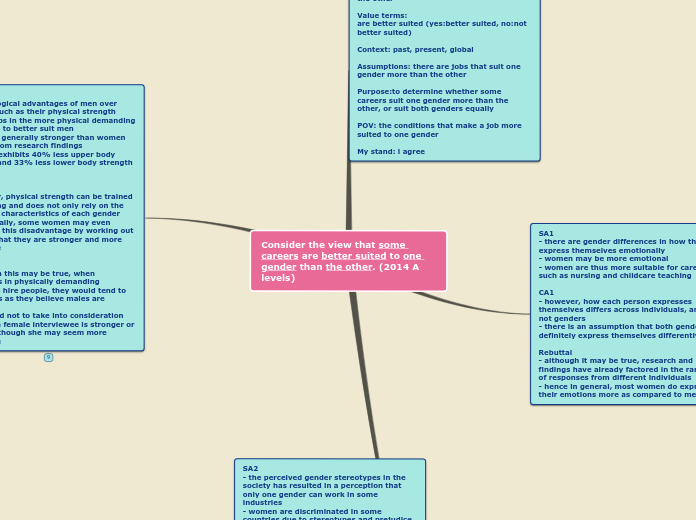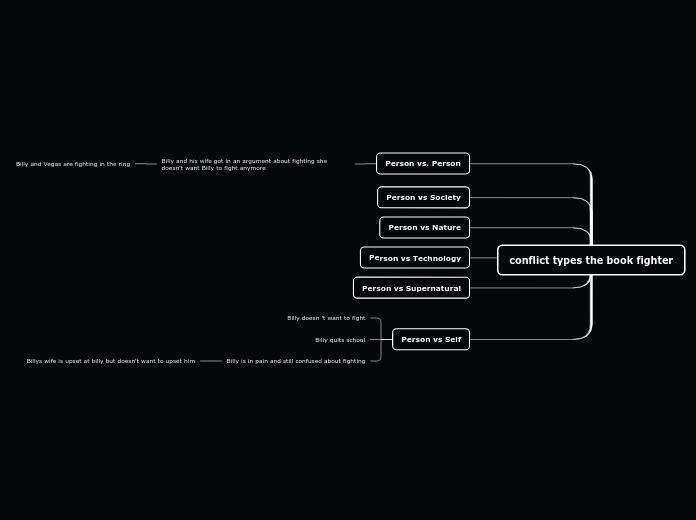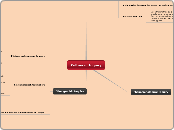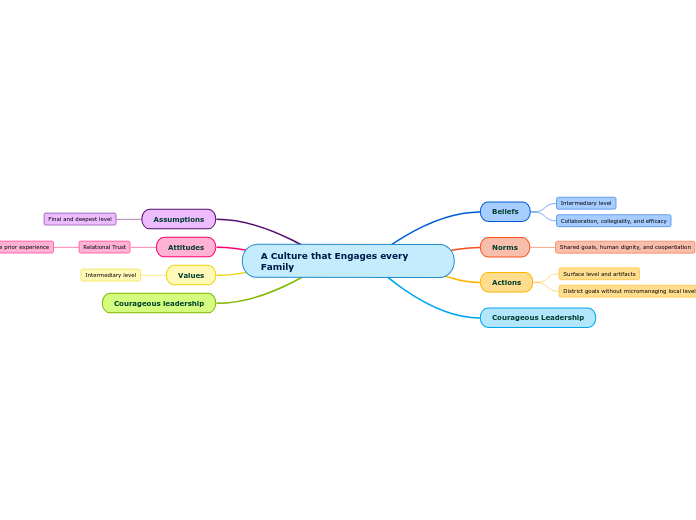TESTS for good inductive reasoning
TEST FOR ALL ANALOGIES: Are the things in an analogy that are being compared similar in important ways?
TEST: is the relationship being expressed one of correlation or causation?
TEST: is the major premise sound?
Argumentation: Critical Thinking in Action.
David Lapakko Ph.D. “Argumentation: Critical Thinking In Action.” iUniverse, 2009-10-29. iBooks.
Use of Language in Argument
8. Metaphors raise some of the most interesting issues and the affect the way we think.
a simile is a direct comparison using like or as; a metaphor is an implied comparison.
7. Language can be more concrete or more abstract; arguers and critical thinkers must be mindful of the difference.
the best answer is that you use a judicious blend of the two, providing concrete words for clarity and abstract words to provide that sense of perspective.
Abstract words
in a sense they are very unclear, but they can bring a lot of concrete things into meaningful perspective. A word that reflects an overall theme that transcends the particular concrete examples.
Concrete words
very narrow and specific, because they are specific the don't allow us to see the bigger picture.
6. There are a variety of types of language that can be regarded as misleading or loaded.
Persuasive definitions and labels
relative terms - words used in relation to something else; intelligent, expensive, safer.
labels- estate tax/death tax, no child left behind, the patriot act.
persuasive definitions - are loaded definitions that are obviously not neutral.
God and Devil terms
words that evoke strong emotions and often go unchallenged. freedom, good, independence, scientific studies, fact, family values, communism, cancer...
weasel words
words that fudge the truth. eg virtually, helpful, practically, up to, possibly, potentially.
Hyperbole
extreme exaggeration
Dysphemisms
word substitute that has a negative effect
Euphemisms
a polite way of taking the sting out of a word.
word substitute that has a positive effect.
5. Sometimes arguers use words that are designed to get us emotionally worked up. Sometimes they will use words designed to calm us down.
4. Sometimes arguers will try to be clear about their use of words; but sometimes they will intentionally be vague or unclear.
people use their words strategically, and one strategy is to intentionally use words that are unclear.
3. Language is not static. the meaning of words changes over time.
eg- gay, liberal, sustainable
2. There is more than one way to define a word and the "dictionary definition" isn't always the best way"
providing an operational definition
defining by comparison and contrast
defining by etymology
defining by function
defining by example
defining by authority
definition by negation- what something is not.
the dictionary, but which one? for law words, a law dictionary may be best. For medical words, a medical dictionary.
1. Words have no intrinsic meaning. They only mean what people think they mean. That makes communication more difficult.
words can create as many questions as they answer.words are by nature ambiguous.
A Dramatic Perspective on Argument
Constructing a Case for Change
The Need to Structure the Solution
Organizational Formats
The "Motivated Sequence"
Criteria-Based
Method of Residue
Comparative Advantage Organization
Causal Organization
Problem-Solution Organization
topical Organization
The Issue of "should" vs. "would"
realism vs. idealism
be mindful of which side you are on. if you are hopelessly idealistic you need to convince others you are not pie the sky. If you are more realistic, you may need to demonstrate you are not a cynical, contrary person, but want a better world as well.
Advantages of Opposing Change
It's easier to demonstrate there are problems than to demonstrate there are workable desirable solutions.
there are often good reasons for doing what we currently do.
have the advantage of presumption
don't let go of what you have until you get something better to replace it.
advantages of advocating change
someone proposing change may be perceived as trying to make the world a better place.
we usually don't debate issues when things are just great.
there are indeed lots of perceived problems in the world.
Issues in the use of statistical evidence.
There are three different ways to define average.
Outliers are numbers that are not representative, they pull the average out of whack.
Median
big outliers won't affect it
the middle number, half of the numbers are above it and half of the numbers are below it.
Mode
Subtopic
The most common number in the numbers list
Mean
expresses central tendency
add up the numbers and divide by how many numbers there are.
3.Survey results must be truly representative
a large sample does not compensate for an unrepresentative sample
Are the samples skewed?
If so the data maybe unreliable.
2. A more precise number is not necessarily a better number.
precise numbers maybe seductive, but question them
1. Not all concepts can be readily quantified.
VALIDITY
are you measuring what you claim to be measuring?
Categories and Types of Evidence
General tests for all types of evidence
10. Cumulativeness
Does all the evidence add up to support the claim or conclusion?
9. Internal consistency
Is the evidence consistent with itself or does it contradict itself?
8. External consistency
Is the evidence consistent with other available evidence?
We are interested in finding where the preponderance of evidence resides - where most sources see this issue.
It can be a red flag... but sometimes a source in the minority can be correct and the majority at times can be wrong.
7. Recency/timeliness
Warnings
2. There may be times when an "older" source could be more appropriate or better.
1. More recent evidence is not automatically better.Don't worship recency.
recent up-to-date evidence can be important, often vital.
6. Expertise
A person with wide and deep and specific awareness of the subject. A more complete understanding than your ordinary mortal.
True expertise is hard to come by.
5. Acess
Does the source have first hand knowledge of the subject?
book knowledge will not do. Direct personal experience with the subject.
4. Reliability
Addresses the question: "Has the source been consistently correct in the past?"
The reality is that one's credibility is dynamic, determined by one's audience (not by the source) and often fragile
3. Objectivity
Evidence which seems to be based on an objective analysyis is normally better than evidence which comes from a biased source.
2. Specificity
evidence must be reasonable specific, not vague.
ferreting out "they say", "Studies show", "Experts believe"
Response should be "name one"
1. Relevance
saying that the opponent's evidence is true, but irrelevant, is one of the strongest forms of refutation
Is the evidence relevant to the claim?
Specific Types of Evidence
Objects or artifacts
Key test for objects is: Has the object been rigged or distorted in any way?
Rather than quotes someone, often it is better to present an object that says it more convincingly. i.e. throwing dirt on a rug and then vacuuming it up rather that telling about or quoting someone on the vacuum.
Testimony
Key tests for testimonial evidence
2. Is the source unbiased?
1. Is the source really an expert?
another support for claims is to quote someone.someone is using another person or organization for support.
2. How are the data presented or conveyed?
Choices to make
In both cases, people will use whichever figure sounds more impressive for their case.
2. What time frame the data cover
people will tend to choose the time frame that best suits their rhetorical purposes
1. whether to present the statistic as a raw number or a percentage.
1. How were the data gathered? How did they arrive at these numbers in the first place?
Numbers can be misleading.
For surveys, did they use a random sample - a sample where every American had an absolutely equal chance of being surveyed?
Examples or specific instances
Key issues involving the use of examples
2. Even if there are a sufficient number, are they representative?
1. Are there a sufficient number of examples?
Usually , examples have the tendency to be dramatic or emotional
General Categories of Evidence
Willing or Reluctant Evidence
Reluctant evidence is when a source presents a point of view or position that would not seem to be in their best interest.
we might be inclined to give it more credence
Willing evidence is given willinglyIs what someone wants you to believesome people have a vested interest associated with the subject
Positive or Negative Evidence
negative evidence - the lack of evidence used as evidence
Positive evidence is the presence of evidence
Direct or Circumstantial Evidence
circumstantial evidence tends to show existence of a fact in question by proving other related facts
direct evidence relates directly to the claim
Primary or Secondary Evidence
secondary would be someone else quoting the original source
primary is the original source
Fundamental Concepts of Argument
Toulmin's Model of argument
components
Reservations
Qualifier
Backing
Warrant
Claim
Some interpretation on the part of the critic may be involved.
Not all six elements of the model are necessary or even relevant.
Components of the model will appear in deferent sequences.
It describes, it does not evaluate.
it's very flexible.
Stock Issues
Stock issues for Factual propositions
Is there sufficient evidence to support the proposition?
What does the proposition mean?
Stock Issues for value propositions
2. Do the value criteria truly support the claim being made?
1. By what set of criteria is the object of the proposition best evaluated?
stock issues for policy propositions
Cost or Desirability
Is it worth the trade off?
At what price?
Cure or Solvency
will the proposed solution actually work
Blame or Inherency
attitudinal barriers
etc...
human nature
the law of supply and demand
competition
Profit motive
structural barriers
something in the status quo (law,regulation,policy) prevents the status quo from dealing with the problem
one must demonstrate that the problem is inherent to the status quo
Ill or Significance
if it ain't broke don't fix it
is there even a problem in the first place
can be used in any situation against any controversy
are not unique, but, generic
Issues
are specific to a particular topic
burden of proof
prima facie case - on first hearing is strong enough to require a response
refers to one wanting to change the status quo needing to make a convincing case
to overcome presumption one must meet a burden of proof
presumption
not everyone agrees on where presumption lies - that too can become a focal point for argument
means we should keep what we have for now until someone clearly states otherwise
natural
a commonsensical idea
artificial
still a good idea
a made-up rule
innocent til proven guilty
applicable in 3 different situations
3. There is a presumption in favor of existing institutions
2. There is a presumption in favor of majority opinion
1. There is a presumption in favor of traditional values and beliefs
Status Quo
current situation
starting point
Other Fallacies
Red herring
involves bringing in a clearly irrelevant point to distract people from the real issue.
Gambler's fallacy
if a coin is flipped 5 times and it comes up heads every time, they might bet the farm that the 6th time it will come up tails.
Historian's Fallacy
occurs when it is assumed that decision makers in the past could see things from the same perspective and with the same information when later discussing the decisions.
hindsight is 20/20
Perfect solution fallacy
occurs when an argument assumes that a perfect solution exists and/or that a solution should be rejected because some part of the problem would still exist after it was implemented.
two wrongs make a right fallacytu quoque "you also"
someone defends a wrong by pointing out that others or an opponent, have acted in the same (equally bad) way.
Slippery slope argument
one undesirable action will lead to a worse action, then a worse one still, all the way down the slippery slope.
The line drawing fallacy or argument of the beard
involves the notion that if it is difficult to draw a line between two things, then one simply shouldn't draw a line.
Equivocation
using the same word in two different ways so as to mislead.
"Straw man" argument
an arguer misrepresents an opponent's position to make it easier to attack.
Reductio ad absurdum
involves taking an opponents idea to an extreme, to an absurd level in a way that is inappropriate or misleading.
Argumentum ad lazarum
assuming that something is necessarily a better value because it cost less.
Argumentum ad crumenum
falsely assures that there is a direct relationship between cost and quality.
Argumentum ad baculum
inappropriate appeals to force or the threat of force
Argumentum ad misericordiam
involves an inappropriate appeal to pity
Argumentum ad verecundiam
b. inappropriate appeal to authority
a. inappropriate appeal to tradition
Argumentum ad populum
to the peoplejust because the majority believes or does something, that doesn't make it right or true.
Argumentum ad hominem
to the personyou hope to discredit a person's idea by throwing rhetorical mud at them.
non sequitur
does not followthe data and the claim just don't seem to connect
Fallacies involving Burden of Proof
begging the question
At the heart of Begging the Question is "proving" an assertion by simply repeating it or rephrasing it.
Argumentum ad Ignorantiam
ignoring Burden of Proof in one of two ways
b. assuming that something is FALSE because it has not been proven TRUE.
a. assuming something is TRUE because it has not been proven FALSE.
Fallacies in Deductive reasoning
False Dilemma
involves presenting two possible alternatives in a way that is inappropriate or misleading.
there are often more than two alternatives
Fallacy of Division
the opposite of fallacy of composition.falsely assuming what is true of the whole is true of the individual parts.
Fallacies in Inductive reasoning
Fallacy of Composition
involves how we move from specific to general.we falsely assume what is true for each part is true for the whole.
Hasty Generalization
fallacy of converse accidentan inductive generalization made on basis of of too few cases.
Fallacies in Causal reasoning
Post Hoc Ergo Propter Hoc
after this, therefore because of thisOne falsely assumes that if B follows A, then B was caused by A.
Critical Thinking
Ethical Issues
Authorship Issues
“Although there are cultural differences with respect to what constitutes “plagiarism,” you should be aware that in U.S. culture, “stealing” words, phrases, or ideas from other sources without proper attribution is a “big no-no”
Obligation to be Knowledgable
“that may not mean that it’s ethical for any person to try to influence others without some understanding of the issue.”
Free Speech Issues
“people are still responsible for the consequences of their words.”
Use of Ambiguity
“arguers will often be intentionally ambiguous for strategic reasons—that is, they know that if they are “too clear,” people might find their ideas or their proposal to be a little too controversial.”
One sided messages
“dealing with competing views to yours, because not talking about them won’t make them magically go away.”
Emotional appeals
scare tactics play off of people's irrational fears
“arguments can play into a variety of human needs, drives, and emotions—for example, our desires for physical safety, emotional security, social approval, self-esteem, and achievement.”
Obstacles
Unconscious Assumptions and Biases
this is why opposing POVs are important
fish discover water last
Either Or Thinking
can lead to the fallacy of false dilemma
ignores the many complexities of an issue
dualistic thinking
black and white orientation
Wishful Thinking
our personal wishes and desires can cloud our judgement
people see what they want to see
Giving Meaning to Unrelated Events
two things happening in time does not mean they are related
Confusing Labels with Reality
labels may not describe accurately
Traits
Fairmindedness vs. Intellectual Unfairness
keep our reactions in check to opposing ideas
consider alternate POV
be aware of our biases
Intellectual Perseverance vs. Intellectual Laziness
carefully reading and thinking
careful and extensive research vs. short cuts
Intellectual Courage vs. Intellectual Cowardice
call it like you see it vs. fitting in
have the courage of our convictions
Intellectual Humility vs. Intellectual Arrogance
no one likes a know-it-all
other points of view have merit
we don't have all the answers
Blooms taxonomy
6 skills
evaluation
to render a judgement the reflects good awareness of the issues involved.
involves some sort of judgement. What is the best model, the most sensible conclusion?
synthesis
creative process that allows a critical thinker to pull various ideas together into a new formulation
involves how you put things together to make a new whole or to develop new insights.
analysis
being able to take a complex problem and break it down to its component parts.
application
being able to take ideas and plug them in to a situation
being able to use the information you have in someway
comprehension
showing you have a grasp of what they mean
being able to explain things
understanding things
knowledge
regurgitation
the ability to know facts, definitions, and other basic types of information.
“the careful, deliberate determination of whether we should accept, reject, or suspend judgment about the truth of a claim or a recommendation to act in a certain way” (Reichenbach, 2001, 19).”
“critical thinking as “a set of conceptual tools with associated intellectual skills and strategies useful for making reasonable decisions about what to do or believe”
“(Rudinow and Barry, 2008, 11)”
3 Elements always present in Argument
Assumptions or a reasoning process
five types of reasoning
casual reasoning
sign reasoning
analogy
deductive
inductive
every claim is based on evidence and reasoning /assumptions are made
Data
the evidence supporting the claim
four types of evidence
objects
testimony
Statistics
examples
Claims
policy
“Policy issues are actually made up of a variety of “sub-issues” that relate to facts and values”
policy claims are by nature broader than factual and value claims
often has the word 'should' in it, but not always.
“The issue always is, what is the purpose or function of the claim?)”
deal with the question " What should we do?"
value
it helps to develop criteria or standards to evaluate a value claim
also value claims connected to ethics or morals
cannot be objectively verified
deal with the issue "Is it good or bad, right or wrong?"
Factual
some factual claims are predictive in nature.
though they can't be verified now, they can be in the future.
May not be true.
Is it true or false?
can be verified
